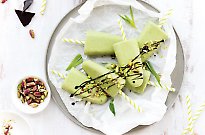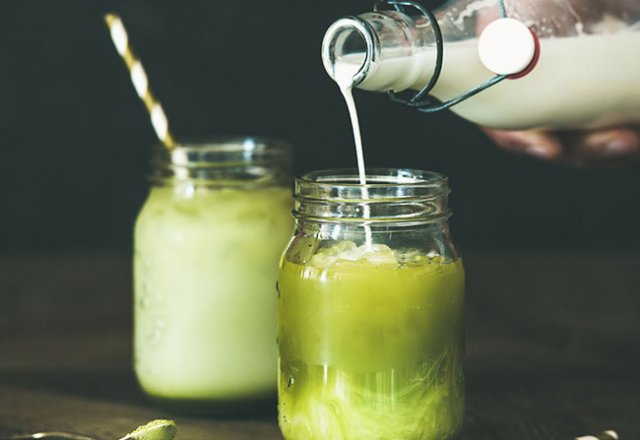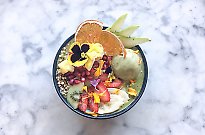
The benefits of matcha

Get some green in you!
We explore why you should get more green in your diet and enjoy some matcha goodness.
Matcha is a special form of powdered green tea. In Japan, matcha forms the foundation of the tea ceremony, a cultural tradition in which the tea is made and served according to a highly meditative ritual. The utensils, technique of making and serving, as well as the accompanying sweets to complement the tea, all play an important role in the ceremony.
The different grades of matcha range from ‘ceremonial grade’ through to ‘cafe’, ‘classic’ and ‘kitchen’ grades. Ceremonial matcha is a fine, vibrantly coloured powder, made from young leaves with the stems removed. The flavour and colour of the other grades are also determined by the type of leaf used, its quality and the processing. All grades can be used for tea and cooking, though the ceremonial grade is considered too special for any use other than in tea, but the distinctive flavour makes it an ideal ingredient in other recipes, too. While most types of teas are used in leaf form for infusing, matcha is powdered to almost dust-like consistency. So whether you’re drinking it as tea or using it in a recipe, you’ll be consuming every precious particle of goodness.
Among matcha’s nutrients are vitamins, minerals and top of the list – antioxidants. Matcha contains over 100 times the amount of antioxidants of regular green tea. These include chlorophyll, which detoxifies by cleansing and purging the body of harmful elements, and the cancer-fighting properties of catechins. Because matcha is ‘shade grown’, it’s even richer in chlorophyll than other green teas.
Matcha is used in an enticing variety of sweet and savoury recipes. Despite its healthy properties, it can’t be claimed that a small amount of matcha in a cake renders that dish suddenly healthy. But once you have discovered the brilliant benefits of matcha tea, it opens a whole new world of ideas. It’s something to balance other ingredients in a recipe, and tastes great.
It’s not easy to pin down the flavour of matcha. The initial taste is of green tea, but with a richer, smoother flavour that’s brought out in different ways depending on the ingredients it’s paired with. It can have a slightly herby savouriness that balances the sugars in sweet recipes, but also an equally fragrant, bitter tea flavour in all sorts of savoury recipes.
There are few ingredients that matcha doesn’t marry well with. Vegan butter, cream and milk-based dishes (particularly ice-cream) love a hint of matcha, as do rice dishes, including risotto, pilaf and stuffings. It’s also brilliant with aromatic ingredients, particularly Asian ones such as ginger, chilli, garlic and lemongrass, and most citrus fruits. Matcha’s also great with chocolate and will add a richness of flavour to just about any chocolate recipe. Try whisking a dash into hot chocolate or an iced chocolate shake.
Whether you want to try matcha in tea, a cocktail or a salad, go out, experiment and meet your matcha!


